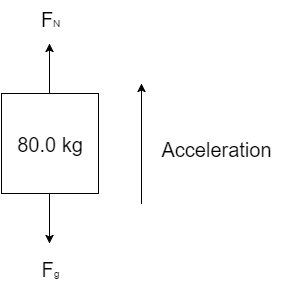I am trying to figure out what forces an $80.0kg$ rider travelling at $110.0km/h$ ($30.56m/s$) would experience when at the bottom of the first drop on a rollercoaster where the radius of the curvature of the track at this low point is $45.0m$. This is part of a centripetal force review. Here is a free body diagram of when the rider is at the bottom of the first drop:
I found that the force of gravity is:
$$F_g=m\times g\\F_g=80.0kg\times 9.8m/s^2\\F_g=784N$$
The normal force is:
$$F_net=m\times a\\F_N-F_g=\frac {mv^2}{R}\\F_N=\frac {mv^2}{R}+F_g\\F_N=\frac {(80.0kg)(30.56m/s)^2}{45.0m}+784N\\F_N=2444N$$
The acceleration is:
$$\\a=\frac {mv^2}{R}\\a=\frac {(80.0kg)(30.56m/s)^2}{45.0m}\\a=20.8m/s^2$$
Now my question is: Why does the rider feel forced down into his seat?
I was told by my teacher that the acceleration would go upwards because there is a centripetal force and the acceleration is center seeking, but it does not make sense to me that the rider would feel forced down into his seat if the acceleration is going upwards. A clear explanation of why this happens would be much appreciated.

